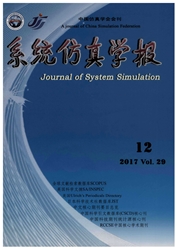

 中文摘要:
中文摘要:
正向和反向驱动性能决定了力觉人机交互系统的逼真性。控制系统的设计如同机械装置设计一样,是正向和反向驱动性能一项重要的影响因素。作者论述了力觉交互装置的控制系统设计与实现方法,并有效的控制设备完成了虚拟墙和虚拟牙面探查实验。首先,针对该系统的驱动性能指标,分析确定了系统的控制结构和实施方案,着重讨论了电机和驱动器的匹配选型和驱动性能,提出了电机选型的两条依据;然后讨论了系统硬件驱动函数库的开发与实现;最后通过虚拟墙和牙面探查操作实验,验证了系统在约束空间和自由空间的驱动性能。
 英文摘要:
英文摘要:
The forward-drive and back-drive performance of a haptic device directly influence the fidelity of a human-machine interaction system. The design of control system is an important aspect in insuring these performances as the same as the design of mechanical device. A control design approach was outlined which could control the haptic device effectively in the experiments of virtual wall and virtual tooth probing simulation. Firstly, according to the system requirement, the control structure and implementation scheme was determined by careful analysis and comparing. The matching and capability was focused between motor and amplifier Some detailed specifications for selecting motor were proposed. Secondly, the control software and device driver for windows were developed. Finally, the drive performance of this system was validated by the results of virtual wall experiment and virtual tooth probing.
 同期刊论文项目
同期刊论文项目
 同项目期刊论文
同项目期刊论文
 期刊信息
期刊信息
